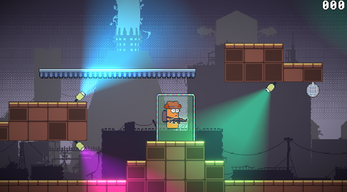RIPPLE EFFECT
INSTRUCTIONS:
A (Move Left), D (Move Right), Spacebar (Jump), Double Spacebar (Double Jump), Left-Shift (Jetpack), Left-Click Mouse (Shoot), Right-Click Mouse (Throw Grenade)
Have you ever noticed that some indie games have that indescribable 'it' factor? That's what I aimed for with my latest game, Ripple Effect. I needed more than just a functional game - I needed to create an experience that was both engaging and exhilarating.
Here's how I did it:
Firstly, I deepened my C# knowledge. I learned how to effectively apply structures (structs), which allowed me to manage complex data more efficiently. I also implemented centralized input systems to streamline how the game processes player actions, making controls more intuitive and responsive.
Moreover, I utilised interfaces to establish clear contracts for my code, ensuring that different game components could interact seamlessly. I also explored various game design patterns, which helped me write cleaner, more organised code that was easier to maintain.
Onto Unity, I introduced screen shake effects, which added a dynamic and visceral feel to the in-game action. Post-processing effects significantly enhanced the visual appeal, providing a more polished and immersive experience.
I incorporated 2D lighting to give the game depth and atmosphere, along with particle effects to make every interaction feel significant—from the sparks of a bullet impact to the explosion of an enemy.
Tilemap prefabs were a game-changer, enabling me to design the map, and masking techniques allowed me to create more complex visual layers. Unity events made my scripts much more adaptable to in-game occurrences, making the gameplay feel more cohesive.
One of the key achievements was building an expandable Audio Manager system. This system didn't just serve the Ripple Effect; it was designed to be scalable for other mid-sized projects. It provides a dynamic audio experience that adapts to the gameplay, enhancing the overall game feel with responsive soundscapes.
As for the player experience, I focused on creating a player controller that was snappy and enjoyable to use. The weaponry in the game needed to be more than just a tool for the player - it needed to be a source of entertainment in its own right. To that end, I tweaked the audio and visual feedback to ensure that every shot fired from the gun was satisfying.
Animations were the final piece of the puzzle, bringing characters and environments to life, making everything from the simplest movements to the most explosive actions feel fluid and natural.
| Status | Released |
| Platforms | HTML5 |
| Author | OnePersonStudio |
| Genre | Shooter |
| Made with | Unity |

Leave a comment
Log in with itch.io to leave a comment.